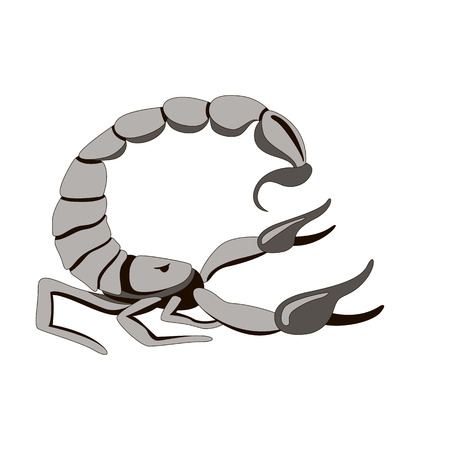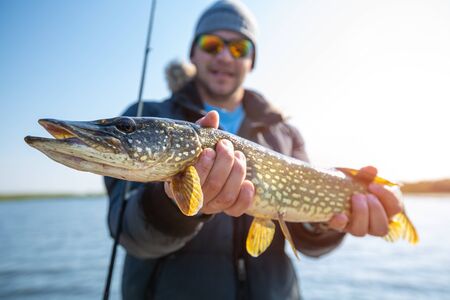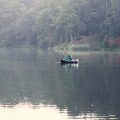Introduction to Pike and Muskie Fishing
Few freshwater fishing experiences can match the heart-pounding excitement of targeting northern pike and muskie. These apex predators, often called “water wolves,” rule the lakes, rivers, and reservoirs across the northern United States and Canada. Northern pike are known for their long, torpedo-shaped bodies and razor-sharp teeth, while muskellunge—or muskie—are revered as the “fish of ten thousand casts” because of their elusive nature and impressive size. Both species thrive in weedy shallows, submerged timber, and deep drop-offs, where they ambush prey like perch, suckers, and even ducklings. Because pike and muskie are opportunistic feeders with keen senses, your choice of lure plays a crucial role in provoking aggressive strikes. Whether you’re casting over thick weeds or trolling along rocky points, using the right lure is essential for success. In this guide, we’ll break down the top 10 lures that consistently produce big bites from these legendary game fish—straight from the tackle boxes of pro anglers who know what it takes to land a trophy.
2. Key Factors in Choosing the Right Lure
When it comes to catching northern pike and muskie, pro anglers know that picking the right lure isn’t just about personal preference—it’s a strategic decision based on several key factors. Understanding these can make the difference between a slow day on the water and landing that trophy fish. Below, we break down the main criteria expert anglers use when selecting lures for these toothy predators.
Seasonal Considerations
The time of year plays a huge role in lure selection. During spring, pike and muskie are often found in shallow waters post-spawn, making smaller, slower-moving lures more effective. In summer, as temperatures rise, these fish move deeper and become more aggressive, so larger, faster lures tend to work best. Fall triggers a feeding frenzy before winter, which means big, flashy baits can yield great results.
| Season | Lure Type | Presentation Style |
|---|---|---|
| Spring | Jerkbaits, Spinnerbaits | Slow and steady retrieves near shallow cover |
| Summer | Bucktails, Topwater Lures | Fast retrieves over deeper weed lines or drop-offs |
| Fall | Spoons, Large Swimbaits | Aggressive action in mid-depths and around baitfish schools |
Water Clarity and Color Selection
Water clarity is another critical factor influencing lure choice. In clear water, natural colors like silver or perch patterns are preferred to mimic real prey. Conversely, in stained or murky water, bright colors like chartreuse or fire tiger help increase visibility and trigger strikes from even hesitant predators.
| Water Clarity | Lure Color Recommendations |
|---|---|
| Clear Water | Natural patterns (silver, gold, perch) |
| Muddy/Stained Water | Bright colors (chartreuse, orange, fire tiger) |
Fish Behavior and Activity Level
Pike and muskie behavior changes throughout the day and season. On calm days or during high pressure systems, these fish might be sluggish—so subtle presentations with finesse lures are ideal. When they’re actively hunting or during low-light conditions (early morning or dusk), opt for noisy lures with lots of vibration or flash to capitalize on their predatory instincts.
Quick Reference: Pro Angler Lure Selection Criteria
| Factor | Lure Choice Impacted By… |
|---|---|
| Season | Lure size, speed, and depth |
| Water Clarity | Lure color and flashiness |
| Fish Behavior | Lure action and presentation style |
The Bottom Line for Pike & Muskie Anglers:
The best lure is always the one matched to current conditions—seasonal patterns, water clarity, and how fish are behaving. The top pros consistently adapt their approach based on these key factors to stack the odds in their favor.

3. Essential Lure Types for Northern Pike and Muskie
When it comes to chasing trophy northern pike and muskie, choosing the right lure is half the battle. Pro anglers across the Midwest and throughout North America rely on a handful of proven lure types that consistently attract these toothy predators. Here’s a breakdown of the most popular categories you’ll see filling the tackle boxes of serious pike and muskie hunters.
Bucktail Spinners: The All-Time Favorite
Bucktail spinners are legendary in the world of muskie and pike fishing. With their flashy blades and pulsating tails, these lures create irresistible vibrations and visual cues in the water. Bucktails like the Mepps Musky Killer or the Cowgirl Double 10 are staples because they can be burned fast over weed beds or slow-rolled along deep edges, making them versatile for different conditions and seasons.
Crankbaits: Covering Water with Confidence
Crankbaits are another essential tool for targeting big esox. Whether you’re casting or trolling, their lifelike action and bold rattles mimic wounded baitfish—prime prey for aggressive pike and muskie. Deep-diving models excel in lakes with drop-offs or submerged structure, while shallow runners are perfect for springtime flats. Brands like Rapala, DepthRaider, and Grandma offer proven winners for this category.
Topwater Lures: Explosive Surface Strikes
If you crave heart-stopping action, topwater lures deliver every time. Walk-the-dog style baits, prop baits, and buzzbaits all trigger explosive strikes from big fish lurking near the surface. Early morning or late evening is prime time for topwaters like the Whopper Plopper or TopRaider—just be ready for an adrenaline rush when a giant breaks the surface!
Jerkbaits: Triggering Reaction Strikes
Jerkbaits combine erratic movements with realistic profiles, mimicking injured prey darting through the water. These lures excel in cool water or pressured fisheries where a change-up is needed to get a follow to commit. Both hard-bodied models (like Suick or Phantom Softail) and soft-bodied options can be twitched, paused, and ripped to dial in just the right action.
Soft Plastics: Versatility and Realism
No list would be complete without mentioning soft plastics. Swimbaits, large tubes, and creature baits rigged on heavy-duty hooks can tempt even the wariest fish. Their lifelike feel often results in longer holds after the bite—crucial when targeting finicky late-season monsters. Soft plastics also shine when worked through heavy cover where other lures might snag.
Each of these lure types brings something unique to your arsenal, allowing you to adapt to changing conditions and fish behaviors throughout the season. By mastering how and when to use these essential categories, youll dramatically increase your odds of landing that next personal best northern pike or muskie.
4. Proven Lures: Picks by Top American Anglers
When it comes to landing trophy northern pike and muskie, seasoned American anglers know that the right lure can make all the difference. Over the years, certain brands and models have become legendary on lakes and rivers across the Midwest and Canada, earning their stripes through countless successful outings. Below, we break down some of the most trusted lures—endorsed by pro guides and competitive anglers alike—that consistently deliver results.
Expert-Approved Lure Selections
Pro anglers often emphasize versatility, durability, and action when choosing their go-to baits. From classic bucktails to innovative glide baits, these picks have proven themselves under tough fishing conditions:
| Lure Brand & Model | Type | Best For | Expert Comments |
|---|---|---|---|
| Bucktail Mepps Musky Killer | Inline Spinner | Weed edges, shallow bays | “A must-have for covering water fast; big vibrations attract monsters.” – Capt. Dave Williamson |
| Suick Thriller 9” | Dive & Rise Jerkbait | Structure, drop-offs | “Perfect for triggering follows into aggressive strikes.” – Mike Keyes, TV Host |
| Rapala Super Shad Rap | Crankbait | Lakes with clear water & active fish | “Its lifelike action makes it a staple in my tackle box year-round.” – Pro Angler Sarah Parvin |
| Bull Dawg Magnum | Soft Plastic Swimbait | Deep weedlines, late season | “The ultimate big fish bait—slow roll it for giants.” – Guide Nick Lindner |
| Cisco Kid Topper | Topwater Prop Bait | Evening or low-light conditions | “Explosive surface strikes keep me coming back to this one.” – Guide Steve Heiting |
| Savage Gear 3D Shine Glide 185mm | Glide Bait | Picky post-frontal fish | “Super realistic; gets attention when nothing else works.” – Tournament Angler Rick Jones |
| Bucher Slopmaster Spinnerbait | Spinnerbait/Buzzbait Hybrid | Heavy cover, lily pads | “Designed for muskie but equally deadly on pike—great for summer weeds.” – Wisconsin Pro Staffer Emily Grantz |
| Llungen Lures Nutbuster Jr. | Bucktail Spinnerbait Hybrid | Muddy water, spring runoff | “Vibration and flash combine for killer attraction in dirty water.” – Illinois Guide Mark Benson |
| Storm Giant FlatStick | Cranbait/Trolling Lure | Trolling big lakes | “Deadly at all trolling speeds—catches both numbers and size.” – Lake of the Woods Pro John Hoyer |
| Daiwa Bessie Swimbait | Jointed Hard Swimbait | Sight-casting near baitfish schools | “Looks just like a real baitfish; produces when others dont.” – Michigan Muskie Hunter Tim Ramey |
Lure Selection Tips from the Pros
The consensus among top American anglers is clear: success comes from matching your lure choice to the season, water clarity, and fish behavior. Always have a variety on hand—from flashy bucktails for stained water to subtle gliders for pressured fish. Experiment with retrieve speeds and presentations until you dial in what triggers those heart-stopping strikes.
5. Techniques for Maximizing Lure Performance
Once youve chosen your lure from the top picks for northern pike and muskie, knowing how to present it is key to triggering strikes—especially in diverse U.S. waters. Each lure type benefits from specific retrieval methods and presentation techniques that can make all the difference between a follow and a ferocious hit.
Bucktails: Burn or Bump
Bucktails are classic musky and pike magnets. In clear water, try a fast “burn” just under the surface to trigger reaction bites. When fish are less active, slow your retrieve and occasionally bump cover or pause briefly to mimic wounded prey. Add occasional rod twitches for extra flash.
Crankbaits: Stop-and-Go Magic
Crankbaits excel with a stop-and-go retrieve. Cast beyond weedlines or structure and crank quickly to dive, then pause to let the bait suspend or slowly rise—often, thats when the strike happens. Vary your speed based on water temperature: slower in cold, faster in warm conditions common across American lakes and rivers.
Jerkbaits: Erratic is Effective
For both pike and muskie, jerkbaits shine with an erratic twitch-pause-twitch cadence. Use sharp snaps of the rod tip followed by pauses of one to five seconds. In pressured U.S. fisheries, this unpredictable action can entice wary giants into striking when steady retrieves fail.
Topwater Lures: Timing and Rhythm
Fish topwaters early morning or late evening for explosive action, especially during summer months in northern states. Steady retrieves work well for prop baits, while walk-the-dog lures need a rhythmic side-to-side action created by gentle rod twitches. Always wait until you feel the weight of the fish before setting the hook.
Spinnerbaits & Swimbaits: Covering Water
Spinnerbaits and large swimbaits are ideal for covering broad areas of shallow bays or weedy flats—prime habitats in many U.S. lakes. Use a slow-rolling retrieve just above vegetation or bump along rocky bottoms. For swimbaits, add intermittent pauses or speed bursts to imitate fleeing baitfish.
By mastering these lure-specific techniques and adapting your approach to local water conditions—from Minnesota’s clear lakes to weedy Wisconsin rivers—you’ll dramatically increase your odds of landing trophy pike and muskie on your next adventure.
6. Safety, Regulations, and Conservation Tips
When targeting Northern Pike and Muskie with top-performing lures, it’s important to prioritize safety—for both anglers and the fish—as well as respect local regulations that protect these trophy species for future generations. Here are some essential best practices to follow on your next fishing adventure.
Safe Handling Techniques
Northern Pike and Muskie are known for their powerful jaws and sharp teeth, so always use long-nose pliers or a hook remover tool when unhooking. Wearing fish-friendly gloves can help you maintain a good grip and protect your hands from accidental bites. If you need to handle the fish, support its body horizontally with wet hands or a rubberized landing net to avoid injuring its spine or removing protective slime.
Catch-and-Release Best Practices
Practicing catch-and-release is vital for sustaining healthy populations of these apex predators. Keep the fish in the water as much as possible, minimizing air exposure—aim for less than 30 seconds out of water. Use barbless hooks or crimp the barbs for easier release, and avoid using gaffs or other tools that may cause unnecessary injury. After unhooking, gently revive the fish by holding it upright in the water until it swims away under its own power.
Know Your Local Regulations
Fishing laws vary from state to state and even between specific lakes or rivers. Always check the latest regulations before heading out—including size limits, bag limits, open seasons, and any lure restrictions (such as no live bait or mandatory single hooks). Violating these rules can result in hefty fines and negatively impact the fishery.
Contribute to Conservation Efforts
Many American states have programs dedicated to muskie and pike management, including habitat restoration and stocking initiatives. Consider supporting local conservation groups or participating in catch surveys that help biologists monitor fish populations. By following ethical angling practices and respecting regulations, you’ll ensure that Northern Pike and Muskie remain thrilling catches for generations of anglers to come.
7. Conclusion and Final Thoughts
After exploring the top 10 lures for Northern Pike and Muskie, it’s clear that success on the water starts with having the right gear in your tackle box. From classic bucktail spinners to innovative glide baits, each lure on our list has earned its spot through years of proven results and the trust of seasoned pro anglers across the U.S. These top picks are not only reliable but also versatile, allowing you to adapt your approach based on conditions and fish behavior.
Remember, presentation matters as much as lure selection. Experiment with retrieval speeds, casting angles, and different color patterns to match the mood of these apex predators. Whether you’re fishing the weedy shallows of Minnesota or the clear waters of Wisconsin, these lures give you an edge when chasing that trophy pike or muskie.
Ultimately, the best way to boost your catch rate is to get out there and try these recommended lures yourself. Stay patient, keep learning, and don’t be afraid to switch things up based on what the day brings. The thrill of landing a monster Northern Pike or Muskie is always worth the effort—and with these proven picks, you’re set up for more epic catches all season long.


